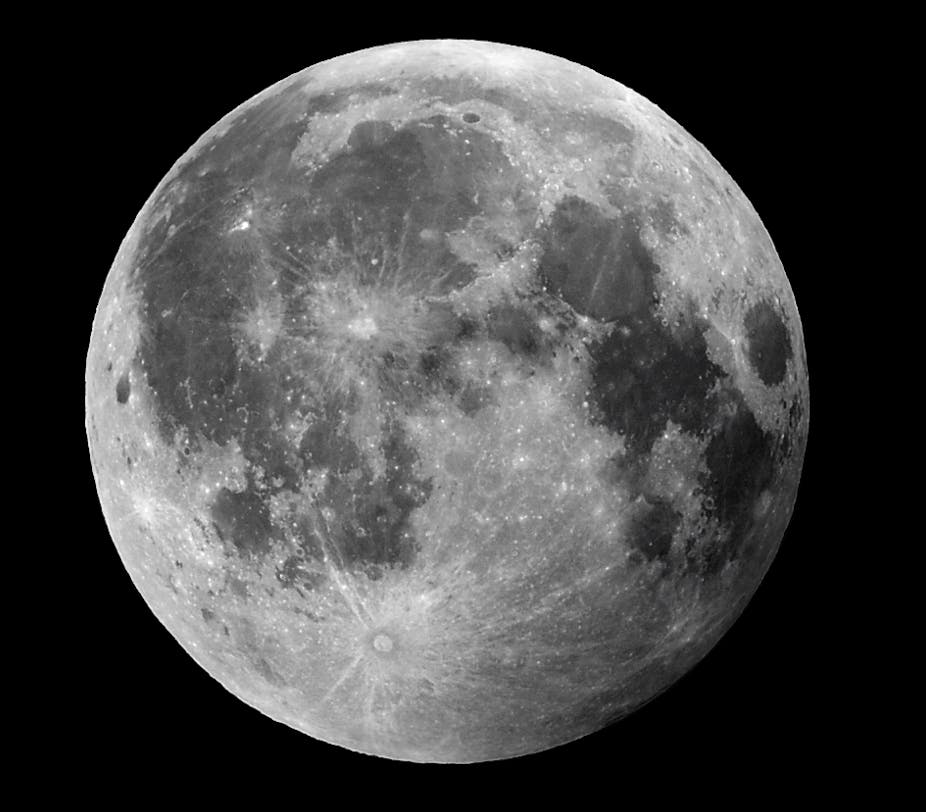With a total lunar eclipse set to occur just before sunrise (AEST) on Thursday, we can expect to see certain views regurgitated about our moon. Our satellite has been the focus of speculation and folklore throughout human history, and indeed right into the present.
So much so that some Christchurch residents, still reeling from the hangover of moon-based earthquake predictions – in addition to the devastating earthquakes of September 2010 and February 2011, and the two powerful aftershocks yesterday – may find themselves ducking for cover.
But those fears would be just as unfounded as fear of any full moon, sun spot or planetary alignment that astrologers have long claimed cause earthquakes.
Indeed, the moon has been scientifically proven to have no significant effect on earthquake cycles.
Troubled Kiwis might well take a lesson from across the ditch – my research suggests the moon had no role in any of Australia’s great quakes.
Lunacy or lunar phenomenon?
SuperMoon is a term invented by astrologers to describe a new or full moon at, or within, 90% of perigee – the point at which the moon is closest to earth during its 27.3 day elliptical orbit.
When this happens, the tidal forces of the moon on Earth are at their maximum and cause abnormally large high tides and abnormally small low tides for coastal areas (also called king tides). Subtle changes in the shape of the solid Earth (called “Earth tides”) are also expected during these intervals.
The alignment of Earth, the moon and the sun, such as during an eclipse, would be expected to produce an additional pull on the Earth.
From a geological perspective, these higher stresses could – one might think – be capable of triggering more earthquakes than usual, though several scientific studies have shown otherwise.
In New Zealand’s recent quakes, as with Japan’s, it was shown there was no statistical correlation between frequency or magnitude of quakes and tidal cycles.
Studying Australian earthquakes
Australia has had 18 significant mainland earthquakes in a little more than a century, with magnitudes ranging from 2.9 to 7.2. Inevitably, when there is another, someone will come forth claiming to have predicted this earthquake based on their interpretation of lunar cycles, as is the case for almost every major earthquake worldwide.
To handle this issue before it hits mainstream media, we explored the temporal relationship between significant Australian earthquakes in recent history – from the 1883 M5.3 Gayndah quake to the 1998 M4.7 Rockhampton quake – as a function of both distance from Earth to the moon and the moon phases during those years.
The chance of getting a random prediction correct in a given year to within five or 15 days of a random earthquake is 1.36% and 4.1%, respectively.
When we analysed all 18 earthquakes, we found that 1.4-2.9% and 3.7-5.1% of quakes occurred within those windows for SuperMoons, and 1.6-3.2% and 4-5.6% of quakes occurred within those windows for Extreme SuperMoons.
Only one of the 18 quakes occurred on the exact day it would have been predicted, and five of the quakes would not have been predicted at all, even when extending the time window to 61 days (plus or minus one month). This of course neglects all years when there were plenty of these lunar phenomena, but no earthquakes.
No predictive power
The probability of scoring an Australian earthquake prediction correct based on lunar cycles is equivalent to that of a random guess, and there would have been several hundreds of false alarms issued based solely on lunar cycles.
A similar principle applies to New Zealand, although the significantly higher rates of seismicity mean that “earthquake predictors” have better odds of getting one right, particularly when unspecific about exact timing, depth, location, and magnitude.
So on Thursday, relax and enjoy the eclipse from stable ground if you’re Australian. If you’re in or around Christchurch, try your best to enjoy the spectacle – and ignore any silly predictions.

